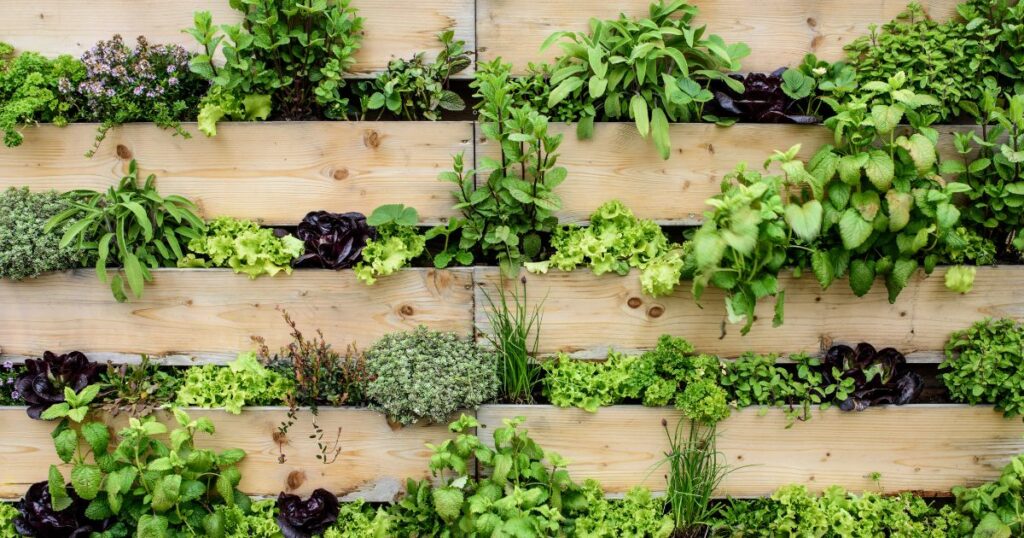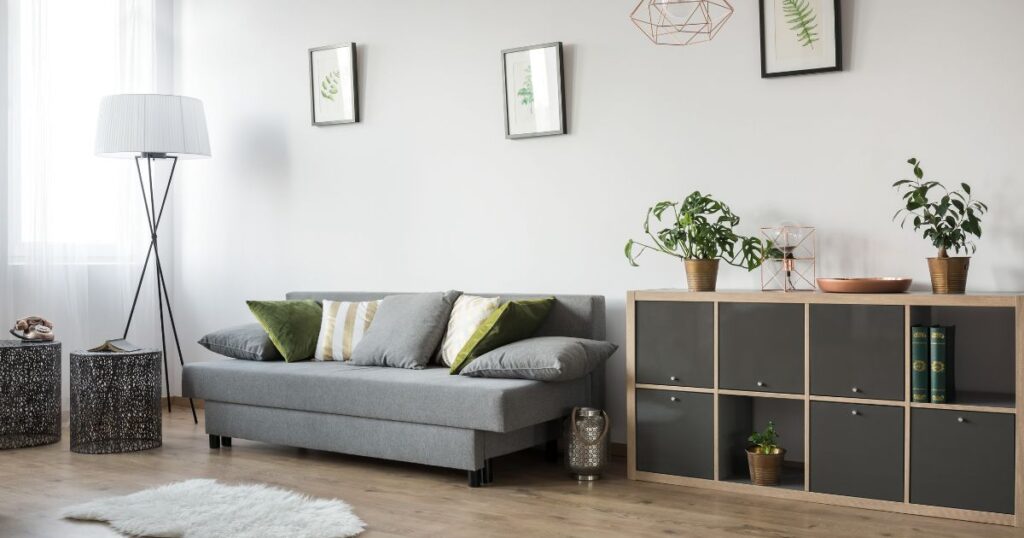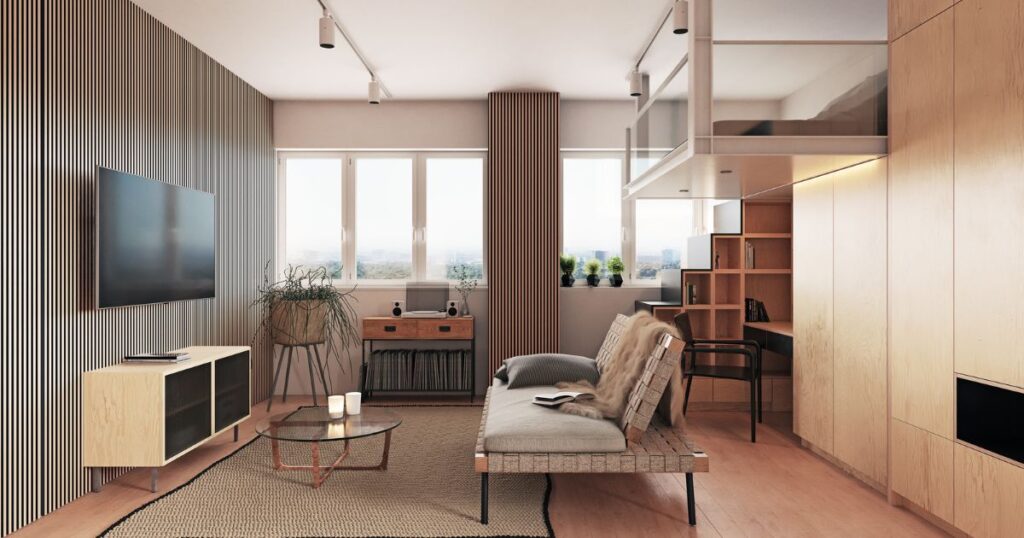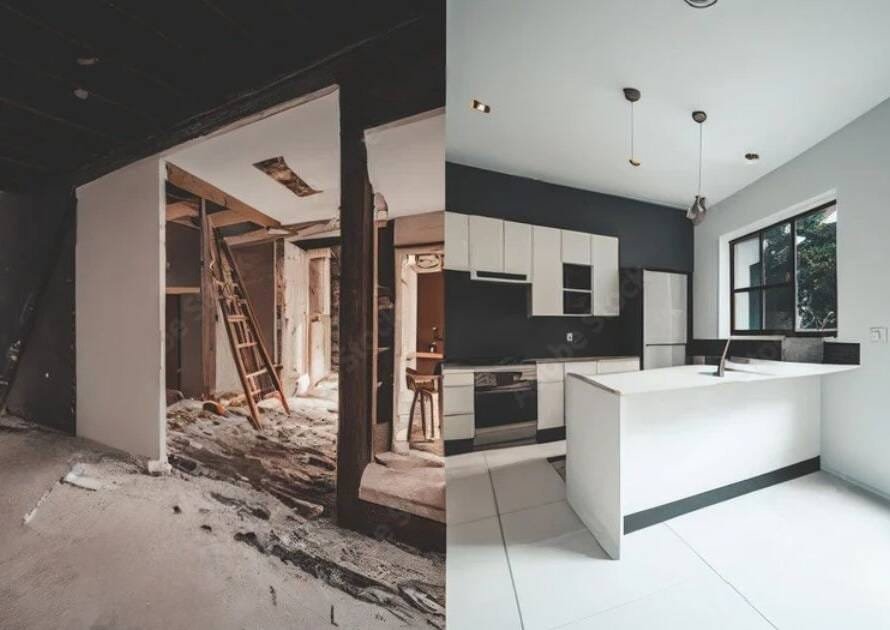In today’s urban landscape, many homeowners find themselves grappling with the challenge of limited outdoor space. Whether you have a tiny balcony, a postage-stamp-sized patio, or a compact backyard, the desire for a beautiful and functional outdoor oasis remains strong. However, small outdoor spaces often present unique challenges that can leave even the most enthusiastic gardeners and designers feeling stumped.
The key to transforming these pint-sized plots into inviting retreats lies in smart, creative design. By thinking outside the box and employing clever strategies, you can maximize both the usability and aesthetics of your small outdoor area. With the right approach, even the tiniest of spaces can become a haven for relaxation, entertainment, and natural beauty.
In this post, we’ll explore a variety of innovative solutions to help you make the most of your compact outdoor area. We’ll delve into three main categories that can dramatically transform your small backyard:
- Vertical Gardens: Learn how to take advantage of vertical space to create lush, green walls that add depth and life to your outdoor area without consuming precious floor space.
- Multifunctional Furniture: Discover clever furniture solutions that serve multiple purposes, allowing you to optimize your space for various activities without cluttering your backyard.
- Compact Design Elements: Explore scaled-down versions of traditional backyard features that pack a big punch in a small footprint, from mini water features to space-saving fire pits.
By the end of this post, you’ll be equipped with a toolkit of ideas to turn your small outdoor space into a functional and beautiful extension of your home. Whether you’re looking to create a cozy nook for morning coffee, a chic entertaining area for friends, or a verdant retreat from the busy world, we’ve got you covered. Let’s dive in and discover how to think big for your small backyard!
Vertical Gardens

Vertical gardens are an ingenious solution for small outdoor spaces, allowing you to create lush, vibrant green spaces without sacrificing valuable floor area. Let’s explore the benefits, types, and how you can create your own vertical garden.
The Benefits of Vertical Gardening
- Maximizing space by using walls and fences: Vertical gardens make use of often-overlooked vertical surfaces, turning blank walls and fences into living, breathing works of art. This approach allows you to dramatically increase your planting area without encroaching on limited ground space. A vertical garden can transform a plain wall into a focal point, adding depth and interest to your small backyard.
- Enhancing privacy and creating a green backdrop: In addition to their space-saving benefits, vertical gardens can serve as natural privacy screens. By creating a lush wall of plants, you can shield your outdoor space from neighboring views while simultaneously enjoying the calming presence of greenery. This green backdrop can make your small space feel more secluded and intimate, creating a personal oasis in even the most urban environments.
Types of Vertical Gardens
- Living walls: Living walls, also known as green walls, are perhaps the most dramatic type of vertical garden. These systems involve covering an entire wall surface with plants, creating a stunning tapestry of foliage and flowers. Plants well-suited for living walls include:
- Ferns (e.g., Bird’s Nest Fern, Boston Fern)
- Bromeliads
- Succulents (e.g., Sedum, Echeveria)
- Small-leaved ivies
- Herbs like thyme and oregano
- Hanging planters and pots: For a more flexible and often more budget-friendly approach, consider using hanging planters and pots. These can be arranged in various configurations to suit your space and style. Options include:
- Macramé plant hangers
- Tiered hanging baskets
- Repurposed items like shoe organizers or pallets converted into planters
- Trellises and climbing plants: Trellises offer support for climbing plants, allowing you to create a green screen or decorative feature. Some excellent climbing plants for small spaces include:
- Clematis
- Jasmine
- Climbing roses
- Annual vines like morning glories or black-eyed Susan vine
DIY Tips for Creating a Vertical Garden
Step-by-step guide for setting up a simple vertical garden:
- Choose your location: Select a wall or fence that receives appropriate light for your chosen plants.
- Decide on your system: Whether it’s a ready-made living wall system, repurposed pallets, or a series of mounted pots.
- Ensure proper support: Make sure your chosen system is securely fastened to the wall.
- Install a waterproof barrier if needed to protect your wall.
- Set up irrigation: This could be as simple as a watering can for small setups or a drip irrigation system for larger projects.
- Add your growing medium: Use a lightweight, well-draining potting mix.
- Plant your chosen vegetation: Start with smaller plants that have room to grow.
- Water thoroughly and regularly until plants are established.
Maintenance tips for vertical plants:
- Water frequently: Vertical gardens often dry out faster than traditional beds.
- Feed regularly: Use a balanced, water-soluble fertilizer during the growing season.
- Prune and trim: Keep plants shaped and prevent overgrowth that could destabilize the system.
- Monitor for pests: Inspect plants regularly and treat issues promptly.
- Replace plants as needed: Some plants may not thrive, so be prepared to swap them out.
- Clean and maintain your system: Periodically check for any wear or damage to your vertical garden structure.
By incorporating vertical gardening techniques, you can create a lush, visually stunning outdoor space that maximizes every inch of your small backyard. Whether you opt for a full living wall or a simple arrangement of hanging pots, vertical gardens offer a fantastic way to bring more greenery into your life without sacrificing precious space.
Multifunctional Furniture

When dealing with small outdoor spaces, every piece of furniture needs to pull its weight. Multifunctional furniture is not just a clever design trend; it’s an essential strategy for maximizing the utility and comfort of your compact backyard. Let’s explore why it’s so important and how you can incorporate it into your space.
Why Multifunctional Furniture is Essential for Small Spaces
The advantage of versatility in tight areas: In a small backyard, every square inch counts. Multifunctional furniture allows you to make the most of your limited space by serving multiple purposes. This versatility means you can enjoy a range of activities and functions without cluttering your area with numerous single-purpose items. The result is a more open, adaptable, and enjoyable outdoor living space.
Examples of furniture that serves multiple purposes:
- Ottoman that opens for storage and can serve as extra seating
- Coffee table with built-in cooler for beverages
- Bench that unfolds into a picnic table
- Planter box with a cushioned top for seating
- Modular seating that can be rearranged for different occasions
Top Picks for Multifunctional Outdoor Furniture
- Folding tables and chairs: Folding furniture is a small-space dweller’s best friend. When not in use, these pieces can be tucked away, freeing up valuable space. Look for:
- Bistro-style folding table and chair sets
- Wall-mounted fold-down tables
- Nesting chair sets that stack for easy storage
- Storage benches that double as seating: These clever pieces offer comfortable seating while hiding away items you don’t need out all the time. They’re perfect for:
- Storing gardening tools
- Keeping outdoor cushions dry
- Hiding away kids’ toys or sports equipment
- Convertible furniture: These innovative designs transform to suit different needs:
- Tables that adjust in height to serve as both dining and coffee tables
- Modular sofa sets that can be configured as individual chairs or a full sectional
- Ottomans that flip over to become side tables
- Daybed that converts into a dining set with benches
How to Choose the Right Pieces
Considerations for durability, style, and size:
- Durability: Opt for weather-resistant materials like teak, aluminum, or high-quality plastics that can withstand outdoor conditions.
- Style: Choose pieces that complement your home’s architecture and your personal aesthetic. A cohesive look can make a small space feel more put-together.
- Size: Measure your space carefully and choose furniture that’s proportional. Oversized pieces can overwhelm a small area.
- Functionality: Prioritize pieces that serve the functions you need most in your outdoor space.
- Comfort: Don’t sacrifice comfort for function. Test seating before purchasing if possible.
Tips on arranging furniture to maintain an open feel:
- Create zones: Designate areas for different activities (dining, lounging, etc.) to give the illusion of more space.
- Leave breathing room: Avoid pushing all furniture against walls. Some strategic empty space can make the area feel larger.
- Use vertical space: Incorporate tall, slim pieces like bar-height tables or vertical planters to draw the eye upward.
- Maintain clear pathways: Ensure there’s a clear flow of traffic through your space.
- Consider sight lines: Arrange furniture to maximize views and create a sense of openness.
- Use lightweight pieces: Furniture that’s easy to move allows for flexible arrangements as needed.
By carefully selecting multifunctional furniture pieces and arranging them thoughtfully, you can create a small outdoor space that feels spacious, versatile, and inviting. The key is to choose pieces that align with your lifestyle needs while maximizing every square foot of your backyard. With the right approach, your compact outdoor area can become a highly functional extension of your living space, ready to adapt to whatever activities or gatherings you have in mind.
Compact Design Elements

When working with a small backyard, it’s crucial to think creatively about how to incorporate all the features you desire without overwhelming the space. By focusing on compact design elements, you can create a fully functional and aesthetically pleasing outdoor area that feels spacious despite its size.
Incorporating Compact Features into Small Backyards
Importance of scale in small spaces: In compact outdoor areas, scale is everything. Oversized elements can quickly dominate the space, making it feel cramped and cluttered. Instead, opt for smaller versions of traditional backyard features. This approach allows you to include all the elements you want without sacrificing the open feel of your space.
Ideas for compact outdoor kitchens and grilling stations:
- Wall-mounted grills: Save floor space by installing a grill that folds up against the wall when not in use.
- Rolling kitchen carts: These provide prep space and storage but can be moved as needed.
- Built-in countertop with a small sink and mini-fridge: Create a compact but functional outdoor kitchen along one wall or in a corner.
- Foldable prep tables: These can be set up when needed and stored away when not in use.
Incorporating small water features like fountains or bird baths: Water features add a sense of tranquility and can make your space feel more expansive. Consider:
- Wall-mounted fountains: These take up no floor space and create a beautiful focal point.
- Tabletop fountains: Place these on outdoor tables or pedestals for a portable water feature.
- Compact pond-less waterfalls: These create the sound and movement of water without the space requirements of a full pond.
- Bird baths: Choose a slim, pedestal-style bath to attract wildlife without taking up much room.
Designing for Flow and Functionality
How to create distinct areas (dining, lounging, gardening) in small spaces:
- Use different flooring materials: Transition from decking to pavers to gravel to visually separate areas.
- Employ levels: Even slight changes in elevation can define different zones.
- Create visual barriers: Use tall plants, screens, or even outdoor curtains to divide spaces.
- Utilize corner spaces: Tuck a small dining set or lounging area into a corner to maximize central open space.
- Implement a focal point for each area: A fire pit for lounging, a small herb garden for the gardening zone, etc.
Use of pathways and stepping stones to guide movement:
- Create a clear main path: Use consistent materials to establish a primary walkway through your space.
- Add secondary paths: Use stepping stones or gravel to create less formal paths to different areas.
- Curve pathways: Gentle curves can make the space feel larger and more interesting than straight lines.
- Use contrasting materials: This helps define pathways and adds visual interest.
- Incorporate plants along pathways: This softens edges and creates a more natural flow.
Creating Illusions of Space
Using mirrors and reflective surfaces to make the space appear larger:
- Outdoor mirrors: Place these strategically to reflect greenery or interesting features, creating depth.
- Mirrored planters: These reflect light and surrounding plants, enhancing the feeling of lushness.
- Reflective water features: The surface of water naturally reflects its surroundings, making the space feel larger.
- Metallic or glass decor: Incorporate these elements to add subtle reflective surfaces throughout the space.
Strategic placement of plants and decor to draw the eye upward:
- Vertical planters: Use tall, narrow planters to create height without sacrificing floor space.
- Hanging baskets: Place these at varying heights to create visual interest above eye level.
- Tall, slender trees or shrubs: Use these as focal points to draw the eye up and create a sense of scale.
- String lights or lanterns: Hang these overhead to create ambient lighting and add vertical interest.
- Trellises with climbing plants: These create living walls that add height and greenery without taking up much ground space.
By incorporating these compact design elements and space-enhancing techniques, you can transform your small backyard into a multifunctional, visually appealing outdoor retreat. Remember, the key is to think creatively about how to include all the features you want while maintaining a sense of openness and flow. With careful planning and smart design choices, even the tiniest of backyards can become a versatile and inviting extension of your home.
Additional Tips for Small Space Optimization

While we’ve covered major elements like vertical gardens, multifunctional furniture, and compact design features, there are additional strategies that can significantly enhance the appeal and functionality of your small outdoor space. Let’s explore how lighting and thoughtful color schemes can transform your compact backyard.
Lighting Solutions for Small Outdoor Areas
Importance of good lighting in creating ambiance: Proper lighting is crucial in any outdoor space, but it becomes even more critical in small areas. Good lighting can:
- Extend the usability of your space into the evening hours
- Create a warm, inviting atmosphere
- Highlight key features and focal points
- Make the space feel larger by illuminating boundaries and vertical elements
- Improve safety by lighting pathways and steps
Ideas for string lights, solar lights, and lanterns:
- String lights:
- Criss-cross string lights overhead to create a starry-night effect
- Run lights along fences or railings to define the space’s perimeter
- Wrap string lights around tree trunks or posts for a magical glow
- Solar lights:
- Use solar-powered path lights to illuminate walkways without the need for wiring
- Install solar spotlights to highlight plants or architectural features
- Place solar lanterns on tables or hanging from shepherd’s hooks for portable lighting
- Lanterns:
- Hang battery-operated lanterns from tree branches or pergolas
- Use flameless candle lanterns on tables or steps for a cozy, flickering effect
- Place large floor lanterns in corners to create warm pools of light
- Additional lighting ideas:
- Install wall sconces for targeted lighting that doesn’t take up floor space
- Use LED strip lights under benches or stairs for subtle, space-defining illumination
- Consider color-changing lights for versatility in setting different moods
Color Schemes and Decor Tips
How to use color to create a cohesive look:
- Choose a color palette:
- Select 2-3 main colors that complement your home’s exterior
- Add 1-2 accent colors for visual interest
- Consider using a color wheel to find harmonious combinations
- Apply the 60-30-10 rule:
- Use your dominant color for about 60% of the space (e.g., main furniture pieces, large planters)
- Apply your secondary color to about 30% of the space (e.g., cushions, some plants)
- Use your accent color for the remaining 10% (e.g., small decor items, flowers)
- Create visual flow:
- Use color to guide the eye through the space
- Repeat colors in different areas to create a sense of unity
- Consider the psychological effects of colors:
- Cool colors (blues, greens) can make a space feel more spacious and relaxing
- Warm colors (reds, oranges) can create a cozy, intimate atmosphere
Choosing decor items that add personality without cluttering the space:
- Select dual-purpose decor:
- Choose planters that double as side tables
- Use decorative storage boxes that also serve as seating
- Opt for statement pieces:
- Instead of many small items, choose a few larger, impactful pieces
- A striking outdoor rug can define a space and add personality without taking up room
- Incorporate wall art:
- Hang weather-resistant art pieces to add interest without using floor space
- Consider outdoor-safe mirrors to reflect light and create the illusion of more space
- Use textiles strategically:
- Add cushions and throws in your chosen color scheme for comfort and style
- An outdoor curtain can create a sense of enclosure and add softness to the space
- Embrace vertical decor:
- Hang wind chimes or mobiles to add movement and interest above eye level
- Use wall-mounted planters or vertical gardens as living art
- Choose multi-seasonal decor:
- Select items that work year-round to avoid the need for storage
- Use planters that look good even when plants are dormant
- Incorporate natural elements:
- Use driftwood, interesting stones, or carved wooden pieces as decor
- These elements add texture and connect your space to nature
By paying attention to lighting and thoughtfully applying color and decor, you can create a small outdoor space that feels both larger and more inviting. Remember, in a compact area, every element should serve a purpose – whether functional, aesthetic, or ideally both. With these additional tips, you can optimize your small backyard to be a beautiful, personal, and highly enjoyable extension of your home.
Final Thoughts
Now that you’re armed with these ideas and strategies, we encourage you to start planning your small backyard transformation. Remember, you don’t have to implement everything at once. Start with the elements that will make the biggest impact on your enjoyment of the space, and gradually add more features as time and budget allow.
Creating your ideal outdoor living area is a journey, and every small change can bring you closer to your vision of a perfect backyard retreat. Whether you’re looking to create a cozy nook for morning coffee, a chic space for entertaining friends, or a peaceful garden oasis, the possibilities are endless – even in a small space.
For more inspiration and detailed guides on outdoor living ideas and solutions, we invite you to explore the rest of our website. From DIY projects to expert advice on plant selection and care, we’re here to help you make the most of your outdoor space, no matter its size.



